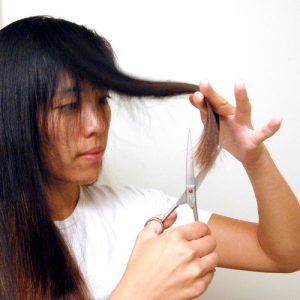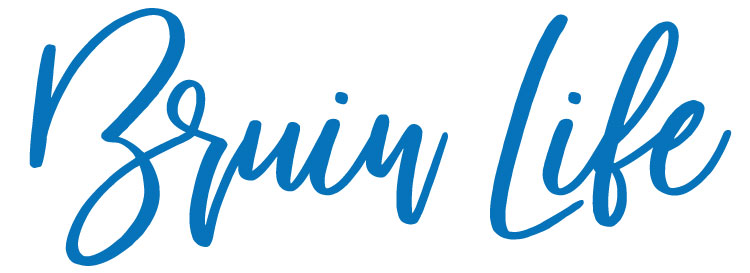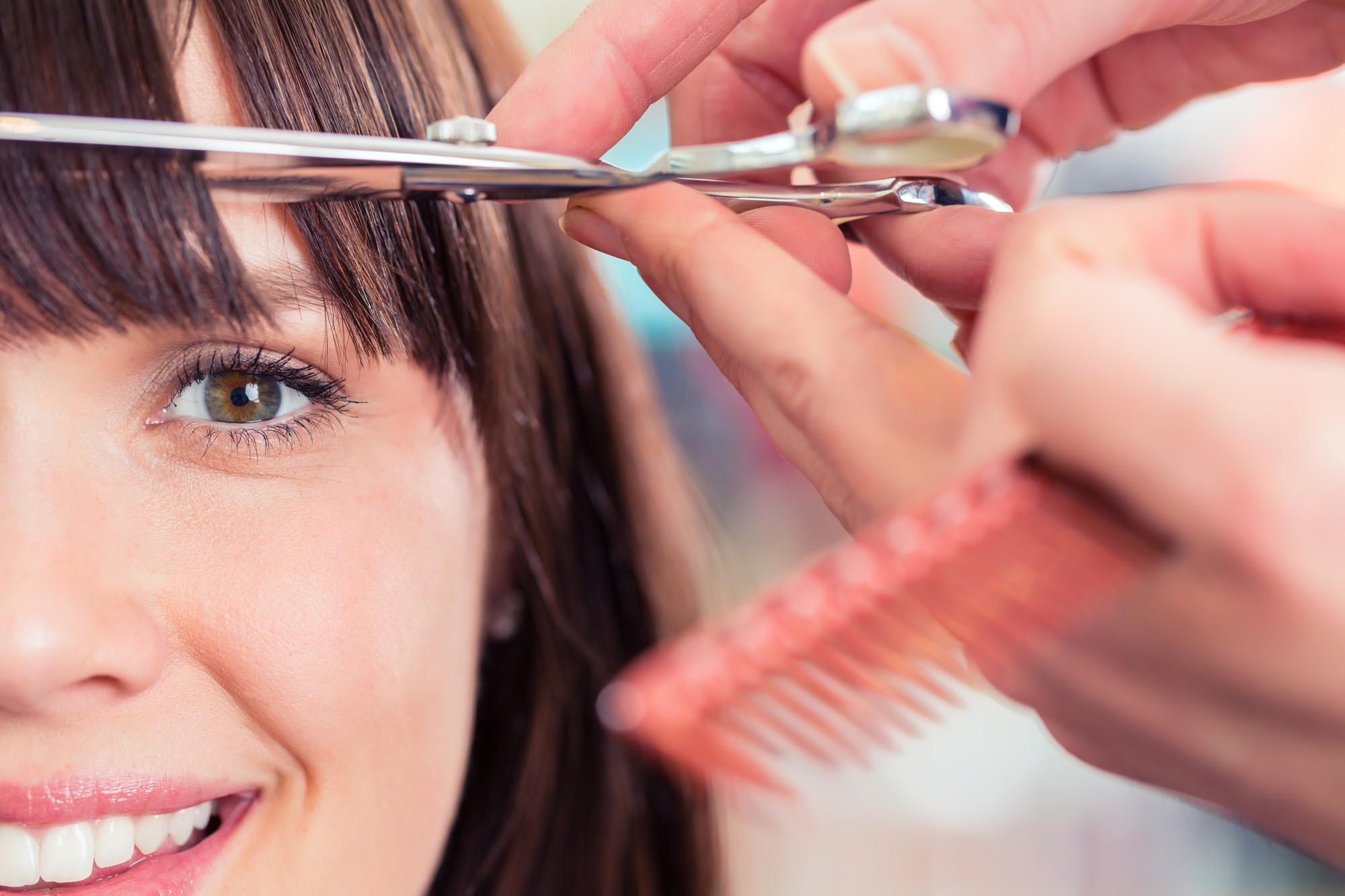Sometimes the urge to look like a brand new person can seem impossible to resist, especially when it’s so simple to fulfill. This particular temptation often bubbles up in the middle of the night when no one is around to offer their wisdom or to simply say, “At least wait until the salon opens up.” Mere minutes after watching a YouTube video where a very foxy Ana de Armas sports her brand new short fringe, the kitchen scissors have been unleashed for a proper 2 a.m. forehead botch job.
Whether the desire to cut your own bangs is driven by a sudden impulse or by the inability to go to a professional, a few simple techniques can drastically improve your hair-cutting experience. Bangs are a pretty big deal because of how visible they are, so it’s important to be extra careful to avoid having to grudgingly hide them with pins and headbands until your hair grows back.
This article will focus on some general tips for DIY bangs and highlight a few popular styles along the way.
1. The Cutting Apparatus (aka scissors)
Before even touching a strand of hair, it’s obvious that a pair of scissors will be necessary to achieve an ideal fringe. Of course, a sharp tool made specifically for shearing hair is the best choice, but these are typically not an option when it comes to impulse bangs.
Nevertheless, kid scissors and anything similarly dull should be avoided at all costs. This ensures that any event of unintended choppiness or damaged ends is kept to a minimum.
2. A Trusted Technique
First, tie any hair that will not become bangs into a tight ponytail far away from the forehead. Getting carried away while cutting happens, so it’s best to separate any hair that might interfere or cause confusion. Depending on the desired style of the bangs, more or less hair can be left out for face-framing purposes.
After determining the amount of hair that will be cut, gather it evenly between two fingers or a fine-tooth comb. This initial step isn’t severely important, but a more even cut can be achieved when the hair is spread uniformly over the forehead.
Many infamous cases of DIY fringe disasters have one thing in common: the attempt to cut the bangs in one fell swoop, cutting right at the length where the individual wanted their bangs to end.
To be safe, the very first cut should always be much lower down on the face than where the intended ends of the bangs will rest. If you are cutting side bangs, the first cut should occur near the bottom of where they will sit near or on the face. When it comes to a shorter blunt style, the first cut should not be made much higher than the tip of the nose. This process provides much more leeway for blending and finding a suitable bang length.
After cutting the bangs to a length that is a couple of inches away from perfect, rotate the scissors upward and chop vertically; this will reduce the harsh lines caused by any initial cuts.

Vertical Hair Cutting Technique Photo credit: https://www.recesswithashley.com/blog/2015/1/27/a-diy-layered-haircut-how-to-cut-your-hair-at-home
Photo via Ashley C. Chin
With this technique, bangs can be gradually customized to look more texturized or thinner toward the middle and end depending on how much trimming is done. The vertical cutting style can be adjusted and applied to all styles of bangs, so it is a critical part of this procedure. Achieving a flawless look does take some degree of patience, but stepping back every so often and pinpointing asymmetries is bound to result in a boast-worthy new hairstyle.
3. Styles of Bangs
Straight-Across
This blunt style is quite common and worn by individuals with various face shapes. Straight-across bangs can be one of the most difficult fringes to obtain as a DIY job but also can be incredibly versatile when it comes to styling.
Pro tip: For fuller bangs, more hair should be taken from the top of the head when cutting. For a wispier look, try using only a thin layer of hair starting with the edge of the hairline.
Side-Swept
Side-swept bangs work well with an existing side part and are a smaller commitment than other fringe styles. These bangs can be matched with various hair lengths and cuts.
Pro tip: These bangs can appear more subtle or dramatically “swoopy” depending on how much hair is involved. For the subtler look, these bangs can be styled according to the wearer’s usual side part. For the latter, it might help to part the hair a little further to the side than normal before cutting.
Bonus Throwback: Curtain Bangs
Somewhat of a combination between blunt and side-swept bangs, this face-framing style is making a comeback in 2021. Named “curtain bangs” because of their ability to frame and highlight facial features, this style compliments hair that is wavy, curly, straight and anything in between!
Pro tip: Like with the previous styles, these retro bangs can be made either fuller or more feathered based on the amount of hair that is cut. The shortest chops should be made near the center of the face, but lengths may vary according to personal preference.

